Speaking as a classical violinist when I first heard a solid-body all-electric violin (not electro-acoustic) I was pretty fucking disappointed with the sound.
Great mixing engineers will often say that the best thing you can do is record the best possible sound to begin with: the best source material leads to the best mixes. This also holds true with instrument tones. The better the base tone of your instrument, the better the result when using effects or an amplifier or whatnot.
The tone of a raw electric violin DI sucks. That's the sound that you get when you plug the thing directly into your interface. The sound of an electric violin plugged directly into an amplifier also sucks. It sounds buzzy, fuzzy, a bit distorted even, more like a brass instrument than a bowed string instrument. However, through several years of research, I've gotten my own tone to a point I'm personally happy with. I'm never going to sound exactly acoustic with my electric violin, and that's okay! In this post, I'm going to talk a little bit about how I get those sounds, with some examples for comparison.
What is an impulse response (IR)?
An impulse response is essentially a recording which captures how some process responds to an impulse. In this context, "impulse" is a technical term for the most perfect possible clicking noise, a mathematically instantaneous click, infinitesimally short. If an effect/process is "linear time invariant", it can be simulated using an impulse response.
How to capture an impulse response is beyond the scope of this article. However, given the impulse response of a real acoustic space, like a giant church with awesome reverb, you can apply that amazing reverb (in stereo even!) to any track in your DAW. And in our case, we'll be using an impulse response taken from an acoustic bowed string instrument, and applying that to the output of the piezo Barbera Twin Hybrid bridge pickup in my Jordan 7-string electric violin.
If you think about it, an electric violin bridge pickup doesn't pick up the kind of sound that we hear out of an acoustic violin. It picks up the vibration of the strings on the bridge... but what we really hear out of a violin is the sound after those vibrations pass through the bridge, then into the body, and then after they resonate around the body and the air inside the body cavity and then bounce out through the F-holes and into the room, and finally cross the room to our ears (or a microphone).
So with that in mind, hopefully you can see how the natural process of making sound with an acoustic violin/viola/cello involves a kind of reverb. And how we might be able to simulate that "reverb", that resonance and filtering, with an impulse response.
How I use IRs
When I play my electric violin, I use a bunch of outboard effects as well as a tube amplifier. If you aren't interested in the technical details of my rig you can skip this. All told, my signal goes through a path something like this:
- Out of the violin into a BOSS WL-T wireless transmitter.
- Out of the BOSS WL-50 wireless receiver into a Line 6 Helix LT digital effects unit.
- I apply an instrument IR of choice here, using the Helix's impulse response block. Then sometimes I run some other effects in the Helix.
- Out of the Helix and into a small pedalboard, consisting of an Idiotbox Effects Dungeon Master, Dwarfcraft Devices Eau Claire Thunder, and Smallsound/Bigsound Mini Overdrive, in that order (and not necessarily all on at once, or at all.) Then back into the Helix, where I might run some more effects.
- Out of the Helix again into a BOSS RE-20 Space Echo tape delay emulator.
- Out of the RE-20 and into a Hovercraft Falcon 50 tube guitar amplifier. This is a boutique 50W head with a clean channel which I modded to be pristine clean for fuzz pedals, and a gain channel which is an absolute sludgemonster. Excellent all-rounder amp, especially for doom/sludge. Lots of warm low-end.
- The Falcon is plugged into a full stack of two Orange PPC412s loaded with V30s. Before the Falcon's power output gets there though, it runs through a Weber Mass 150 attenuator.
- The attenuator has a line output which plugs into my Scarlett 18i20 interface.
- I put a PPC412 speaker cabinet IR from Ownhammer on the result to get a "mic'd cab" signal.
The important point here is, the impulse responses are applied basically first thing, before any major changes to the sound. I think this is very important because impulse responses change the feel of the sound as much the tone itself, and this all affects how effects like distortion respond to it. So in order to have distortion respond to your playing in a way that feels "right", I think you need to have the instrument sound "right" as early as possible.
What IRs do I use?
All the IRs I use come from 3SigmaAudio. As an aside, I am not affiliated with 3SigmaAudio in any way, and I paid for all the IRs that I use here (I think they're very reasonably priced for what they are, especially since no one else I know of makes IRs of this sort at this level of quality).
I use their French Cello impulses, often heavily modified for my use. Since I play a 7-string electric, the low range of the instrument extends about a whole step below a cello's low C string. If you're a guitarist, it may help you to think about my instrument like a shoulder cello in drop A# (yes, the same drop A# you might use as a guitarist. Before you ask, yes, it djents. Sort of.)
The cello IRs have a huge and very warm low-end with a high-end thickness and mid push that I really like. The modifications I usually do to them are high-pass filtering and other EQ moves to lessen some of that low-end, so that distortion responds more tightly to my playing. Generally speaking I use a much warmer/low-end heavy/less modified IR for clean playing and a much more drastically modified IR for distorted playing. I've also recently started blending in a very small amount of the bassier IR with the tight-sounding IR for a little bit more low-end in my distorted tones (something like 15% bassy, 85% tight.)
Sound examples
I'm going to show three different sounds I might use, both with and without my impulse responses applied before all of the distortion effects (if present) and the amplifier. None of this is directly into my interface; all of it runs through either the clean or dirty channel of my amplifier. This is how I use my instrument, but might not be how you would use yours! Either way I think this will still be helpful even if you run directly into your interface. The difference is quite drastic.
Sound 1: clean with a little bit of delay/reverb
There is a 70hz high-pass from TDR Nova and a little bit of delay/reverb here applied from the Arturia Delay TAPE-201 and Rev PLATE-140:
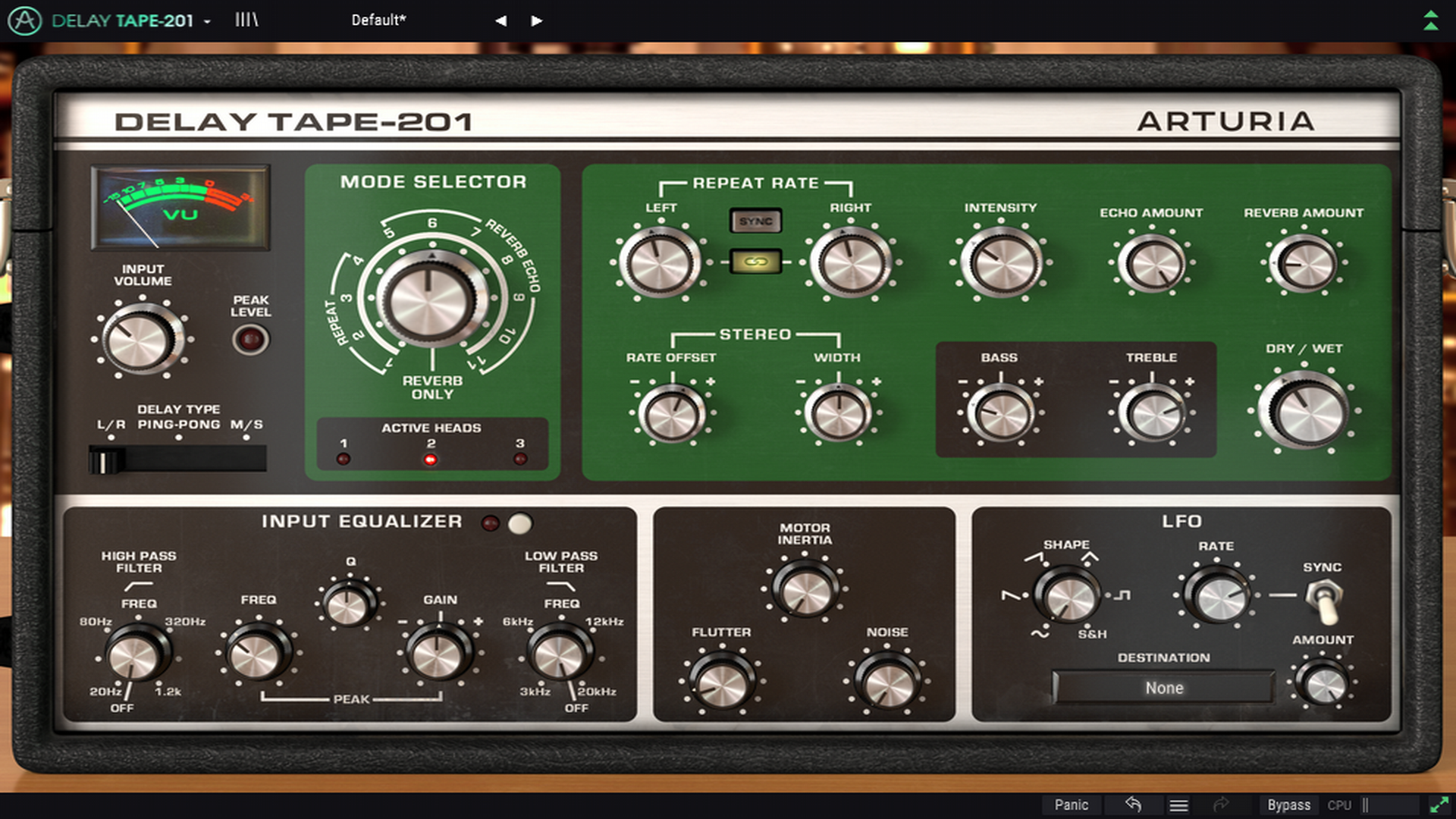
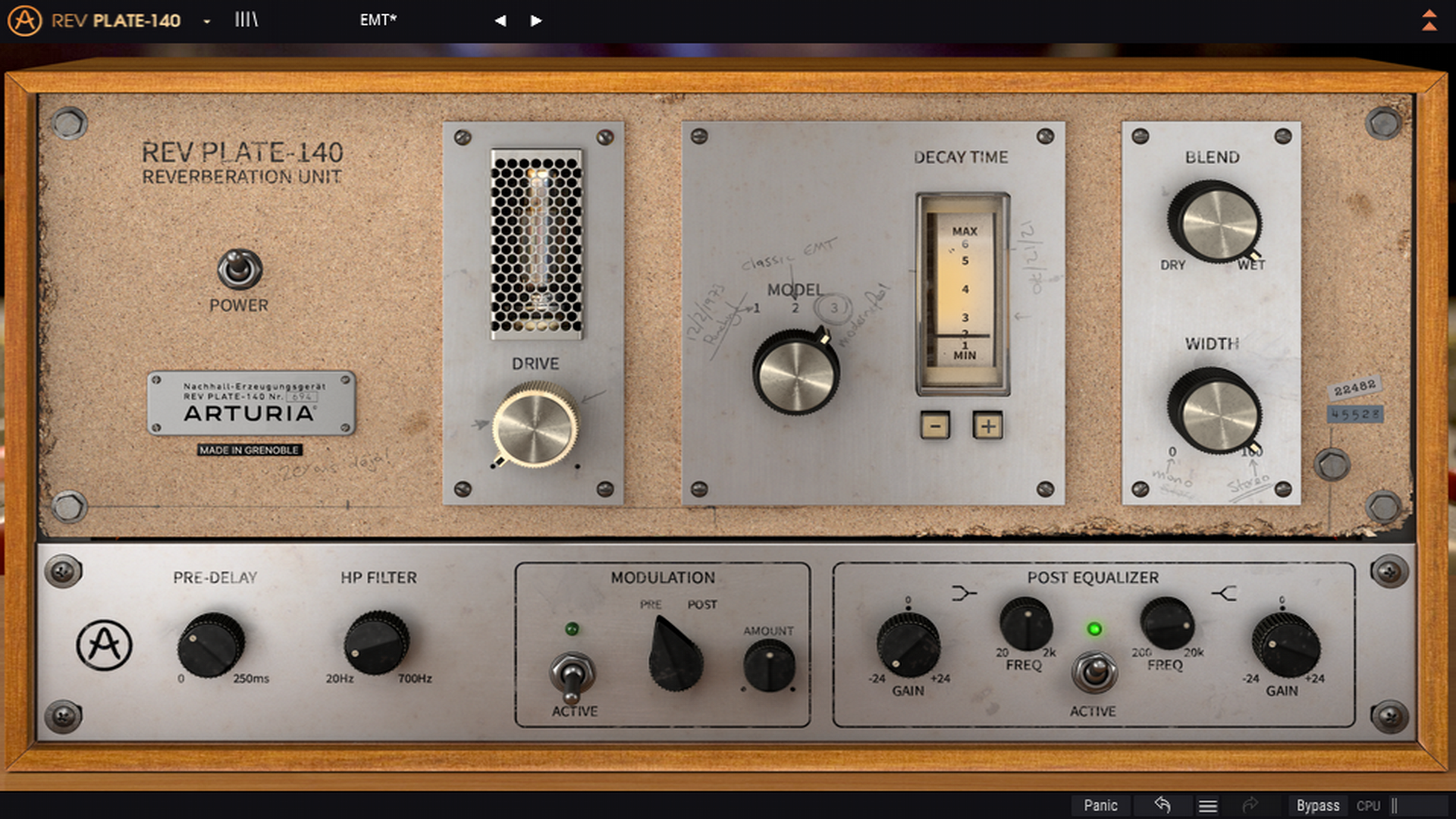
The PLATE-140 reverb is on a send mixed in at -12dB:
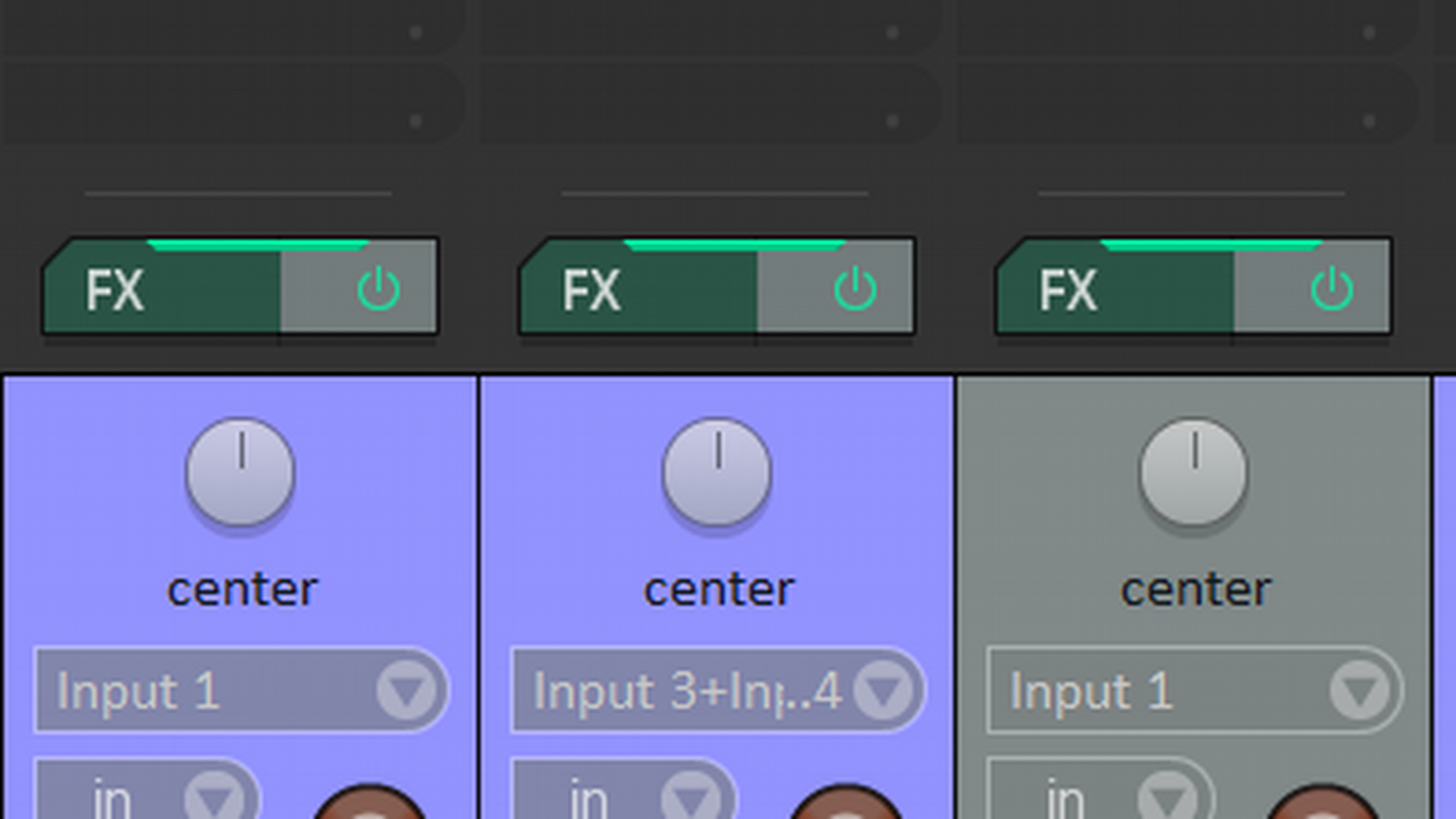
Basically, just a little flavor/space. The comparison/difference between the IR-applied and raw tracks is so drastic that this really just makes the raw track a little bit more palatable and string-like.
Both examples here are using the Ownhammer OH 412 ORNG V30 OH1-00 speaker cabinet impulse response on the amplifier's output. This is unrelated to the violin/cello IRs; it's just necessary to get a good sound out of an amplifier when recording DI. If you don't know what this is for, don't worry about it.
To me, the version with the IR sounds much more "acoustic" than the one without. Without the IR, the sound takes on a bit of a brassy quality and loses the feeling of impact on the more percussive strokes. With the IR, the tone is more "woody", has a bit more "thump", and feels more like a real instrument, at least to me.
Sound 2: "standard" hard rock/metal distortion
This time, we move to the amplifier's dirty channel with a boost pedal in front. I'm using the Helix's Tubescreamer model here, with these settings:
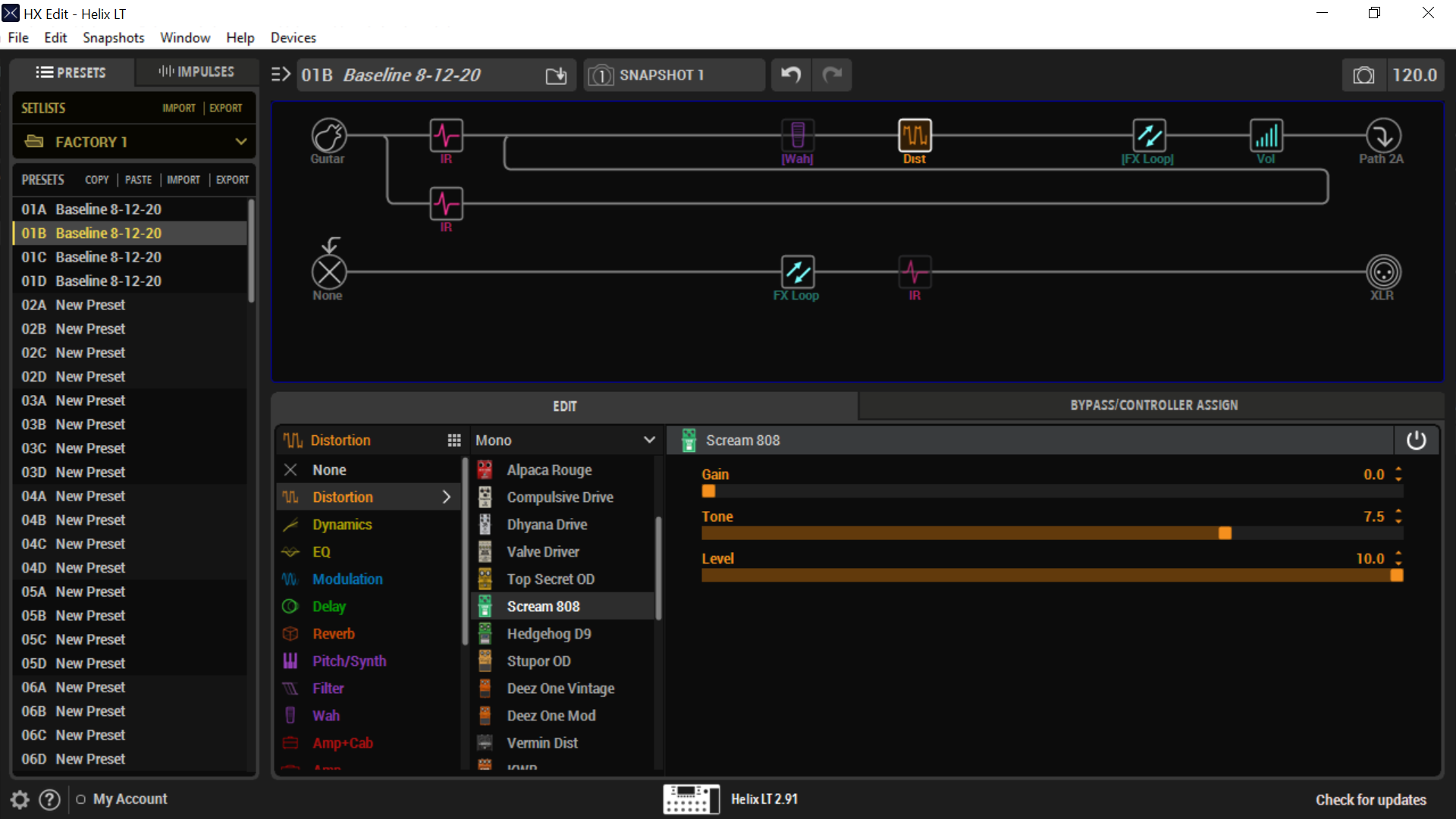
In case you aren't aware, using a Tubescreamer like this will remove quite a bit of low-end and mud and accentuate the upper mids.
In this screenshot you can also see a bit of how I set up the blend of the two IRs before the rest of my signal chain (the amplifier is the second FX loop. It's a little crazy how I set that up using my attenuator so I'm not going to go into it here.)
For this example, the speaker cabinet IR used is the Ownhammer OH 412 ORNG V30 MDRN-02, with a 50hz high-pass afterwards from TDR Nova. No other processing is used.
The part is (messily) double-tracked, with one part each panned hard left/right.
Thoughts
Without the IR, the signal is absolutely chock full of mud. And that's with the "Tubescreamer trick", which should be removing quite a bit of mud! Super loose sounding low-end, and some odd resonances. With the IR and the Tubescreamer boosting the amp, it sounds nice and tight. Even if you're going for a sludgy, messy sound, there are way better ways to get it than by using your violin without an IR.
Sound 3: FUZZ.
I like fuzz.
This one's my Dwarfcraft Devices Eau Claire Thunder, running into my amplifier's clean channel. The Eau Claire Thunder is a Green Russian Big Muff style fuzz with a few changes (tone knob is backwards, for one). It's my favorite fuzz pedal. I have it set like so:
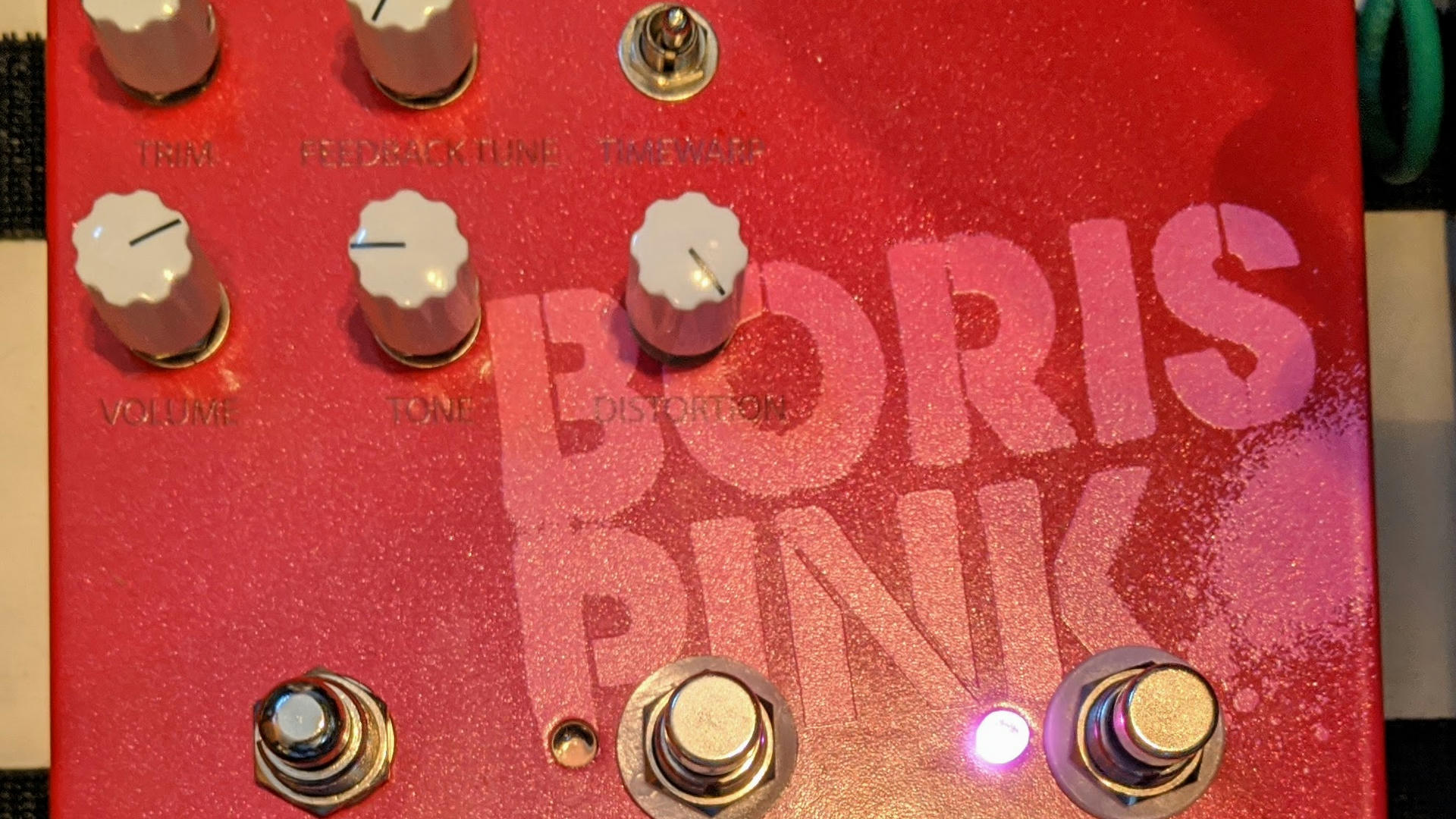
Here's the files. I love this thing so much. With the IR on, at least.
Without the IR, the fuzz gets absolutely choked with low-end and almost sounds broken. For some people, that might be a good thing. For me, I think there are better ways to get broken sounds. I have a few tricks for that too but I'll leave that sound design for another day, since it's more about pedals and effects than IRs.
With the IR, the fuzz sounds crispier and more defined. I love this fuzz. I love it so much. Bonus points if you know the riff I played here. I love that riff too.
Takeaway
Hopefully, you have an idea of what impulse responses can do for electric bowed strings now! I might at some point write a post on how to modify impulse responses. There are a few ways to do it, and a couple of them are free (but not the easiest.) IRs are core to my violin tone and the way I play. Maybe they'll end up that way for you, too.
If you have any questions, feel free to message me! I'm always happy to talk, especially about loud things.
